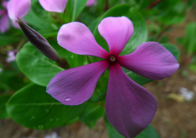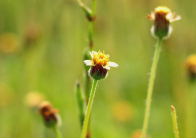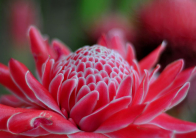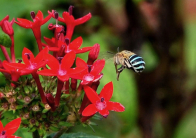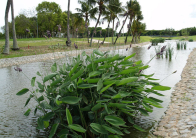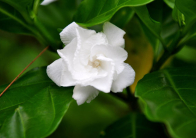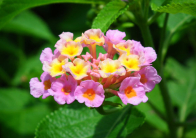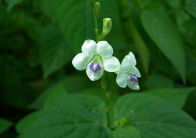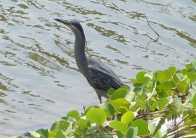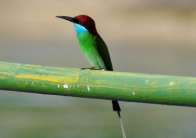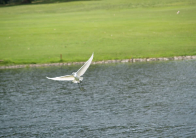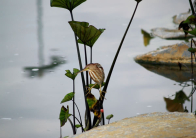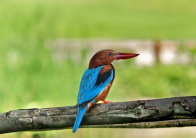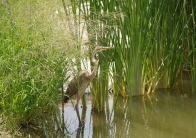ECO EFFORTS Fauna Flora
All bungalow air-conditioning split units have been replaced with 5-tick energy-saving models, enhancing efficiency and reducing power consumption. Furthermore, bungalow living rooms have motion sensors to reduce air conditioning usage when there is no occupancy.
The main swimming pool, wading pool and wet play balancing tank monitoring system has been implemented to regulate water levels and minimize water loss.
The drainage water channel has been constructed to direct excess water into the golf pond, preventing wastage..
Timers have been installed to control zoning in designated areas after dark, reducing unnecessary power consumption.
Motion Sensors have also been implemented to reduce unnecessary lighting usage.
99% of lighting fixtures have been upgraded to LED, significantly cutting down energy usage compared to traditional lighting.
Solar powered aerators are installed at Changi and Kranji golf courses. They are a form of renewable Clean Energy which not only provides higher cost saving, but also reduces Greenhouse Gas Emissions.
Improved Water Quality:
- Increased dissolved oxygen
- Prevent algae bloom
Estimated Energy & Cost Saving:
- 2.92 Mega Watt-hour / year
- $894.98 cost saving / year
* Assuming 2HP solar aerator operating between 7am to 7pm, with electrical tariff rate of 30.65 cents/kWh. Estimated ROI of 3 years
Plumeria rubra or as it is more commonly known among us as Frangipani, grows as a spreading shrub or a small tree to a height of 7 to 8 m (20-25 ft) and similar width. It has a thick trunk and blunt branches covered with a thin grey bark. The branches are brittle and when broken, ooze a white latex, or sap. The large green leaves can reach 30 to 50 cm (12-20 in) long and are clustered at the end of the branches. The flowers appearing at the ends of branches are strongly fragrant, have five petals and their colours range from the common pink to white with shades of yellow in the centre.
In traditional Chinese medicine, extracts from this plant is used to treat numerous diseases, including diabetes, malaria, leukemia and Hodgkin’s disease. Also used as an ornamental plant, Catharanthus cultivar thrives in dry conditions and is noted for its long flowering period. In the tropics, it flowers throughout the year while in warm temperate climates, it flowers from spring to late autumn.
Tridax procumbens is a species of flowering plant in the daisy family. Best known as a widespread weed and pest plant, Tridax procumbens bears daisy-like yellow-centered white or yellow flowers with three-toothed ray florets. Its fruit is covered with stiff hairs and has a feathery, plume-like white pappus at one end.
Commonly known as West Indian Jasmine, Ixora is a common flowering shrub native to Asia. Ixora is also known as Jarum-Jarum, Jungle Flame as well as Jungle Geranium. The plants possess leathery leaves, ranging from three to six inches in length, and produce large clusters of tiny flowers in the summer. In tropical climates, this plant will flower all year round.
Thalia dealbata (Powdery thalia, Hardy canna, Powdery alligator-flag) is an aquatic plant in the family Marantaceae. It grows to 6 ft (1.8 m), with small violet flowers on an 8 in (20 cm) panicle held above the foliage. Its blue-green leaves ranges from being lance -shaped (long, wider in the middle) to oval or egg-shaped, with a tapering point; dusted with white powder and with purple edges.
Tabernaemontana corymbosa is a species of plant in the Apocynaceae family. It is found in Brunei, China, Indonesia, Laos, Malaysia, Myanmar, Singapore, Thailand, and Vietnam. These plants are shrubs and small trees growing to 1-15 m tall. The leaves are evergreen, 3-25 cm long, with milky sap. It is one of the diverse plant genera commonly called ‘milkwood’. The flowers are 1-5 cm in diameter, white in colour and are extremely fragrant.
Lantana Camara 'Mutablis' colonises new areas when its seeds are dispersed by birds. It has become naturalised in tropical and warm regions worldwide. In greenhouses, it is notorious for attracting the whitefly. The berries are edible when ripe, though like many fruits, they are mildly poisonous to humans and livestock if eaten while still green.
This tropical plant is commonly known as the Chinese Violet, Coromandel or Creeping Foxglove. In South Africa, it is known simply as Asystasia. It is a ground creeper but can reach up to 1m if supported. The stems root easily at the nodes while the fruit explodes in green, but dries to brown after opening. The leaves are eaten as a vegetable and used as an herbal remedy for the management of asthma.
Standing at 1m tall with a wingspan of 2m, the Grey Heron is the largest bird in Singapore. Characterised by its long neck and powerful bills for a long and strong reach, this heron usually waits on the mud or at the water's edge to snatch passing aquatic prey. It's a common resident throughout the island, and North offshore islands such as Pulau Tekong and Pulau Ubin, and of course, you may spot it on our courses!
The Blue-tailed Bee-eater breeds in Southeastern Asia and is characterised by its richly coloured plumage. This strongly migratory bird has a narrow blue patch on its face with a black eye stripe, a yellow and brown throat followed by a predominantly green body and of course, a blue tail. It is a very common winter visitor throughout the island and can often be seen near large water bodies such as those at NSRCC golf courses.
With its extremely long legs and kinked neck, the milky-white feathered Egret cuts a distinguished figure when it makes an appearance on our courses. Mainly a fish fan when it comes to its diet, the Egret is not averse to a bit of amphibians (frogs), aquatic invertebrates (insects, crayfish), and reptiles (snakes) once in a while. It's a skilled hunter and prefers to steal food where possible.
If you hear a loud bird cawing while on the greens, it might just be the Kingfisher. This species likes to make its presence known by its loud calls. You can spot it by its distinctive colouring - Its throat and breast are covered in white plumage while its head and the rest of its underparts are chocolate brown, contrasting sharply with its turquoise back and tail. It’s a common resident throughout the island.
The Purple Heron is the most colourful large heron, with a distinctive snake-like neck that is usually held in a prominent kink. It has a magnificently-coloured plumage - purplish-brown, with a long black crest, white or cream with black line down the sides of its body, a yellow bill and orange-yellow legs and toes. Its colourful plumage actually provides an excellent camouflage among the reeds.













